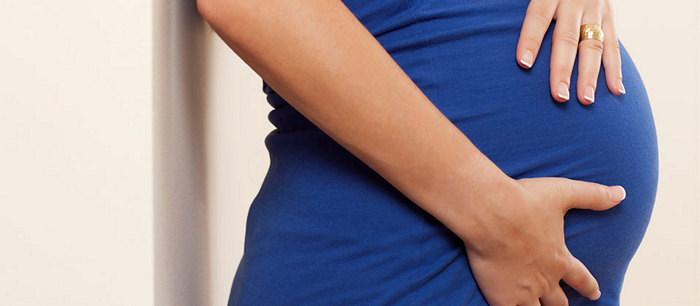Pregnancy
Groin Pain During Pregnancy

Last Updated on January 22, 2025 by Joshua Isibor
Groin pain occurs when the muscles and ligaments stretch to accommodate the uterus and fetus during pregnancy. This can trigger pain in the left or right groin region.
Some women may begin to feel pains in the groin region during pregnancy. This is most times referred to as pregnancy-related pelvic girdle pain (PGP) or symphysis pubis dysfunction (SPD).
Groin pain is a usual pain during pregnancy, and it frequently becomes worse as the pregnancy advances. Ligament pain and vaginal cases are usual causes of groin pain during pregnancy.
Groin pain is not a serious situation, and it doesn’t really mean it’s a problem during pregnancy. Nevertheless, any symptoms of pregnancy should be reported to a doctor or midwife.
SPD is caused by a stiffness of the pelvic joints or the joints.
Causes of Groin pain
As the uterus enlarges, it pushes the pair of ligaments to extend. Subsequently, you may experience a sudden pulling of the right or left ligament, a bit like a rubber band breaking.
It can happen when you sneeze, cough, or make a sudden movement. Usually, the pain is extreme but brief and feels like a muscle spasm, a cramp, or a burning sensation.
Groin pain usually occurs in the second trimester. It can also occur later, when the baby’s head is engrossed.
How to prevent and reduce groin pain
1. Slow down and stay away from sudden movements, such as going out of bed quickly.
2. Lean forward when sneezing or coughing.
3. Bend down while holding the back of a chair.
4. Reduce the weight on your uterus by using a maternity belt.
When you spend time in a swimming pool it can also assist in reducing the weight on your uterus.
5. Lie down on the side that hurts and bring your knees toward your chest.
6. Take a warm bath or apply moderate heat to your groin or lower abdomen.
Symptoms of SPD
SPD won’t hurt your baby, but this can cause pain.
Women with SDP may feel pains:
i.Over the pubic bone at the front in the centre.
ii. Roughly level with your hips across 1 or both sides of your lower back.
iii. In the area between your vagina and anus (perineum) spreading to your thighs.
iv. Some women may feel or hear a sharp or crushing pain in the pelvic area.
The pain can be worse when you are:
1. Walking
2. Going up or downstairs
3. Standing on 1 leg (for instance, when dressing up)
4. Turning over in bed
5. Moving your legs apart (for instance, when you leave a car)
6. Most women with SDP can have a vaginal birth.
A piece of quick advice: Call your midwife or doctor if you have pelvic pain and:
i.It’s hard for you to move around
ii. It hurts to get out of a car or turn over in bed
iii. When it is painful going up or downstairs
These can be signs of pregnancy-related pelvic girdle pain.
Treatments for SDP
Being diagnosed early enough will reduce the pain to the bearest minimum and avoid long-term pain.
You can also ask your doctor or midwife for a referral to a physiotherapist who is an expert in obstetric pelvic joint problems.
Physiotherapy aims to relieve pain, enhance muscle activities, and improve pelvic joint position and stability.
This treatment may include:
i.Manual therapy to make sure the joints of your pelvis, hip and spine move normally
ii. Exercises to strengthen your pelvic floor, stomach, back and hip muscles
iii. Exercises in water
iv. Advice and suggestions, including positions for labour and birth, looking after your baby, and positions for sex
v.Pain relief, such as TENS
vi. Equipment, if necessary, such as crutches or pelvic support belts.
These SDP problems do not stop so fast until the baby is born, but treatment from an experienced medical practitioner can enhance the symptoms during pregnancy.
You can also reach the Pelvic Partnership for information and support
Alternative therapies include:
There are other therapies that you can use, they include:
1. ATENS machine
2. Acupuncture
3. Hypnosis
3. Meditation, for example, mindfulness or yoga
4. Complementary therapies such as massage or reflexology
Everyday tips to help relieve SDP
1. Avoid anything that can make the pain worse. For Instance, if parting your legs makes the pain worse, roll out of bed and walk on the stairs step by step.
2. if possible get assistance by considering other children.
3. If you have a younger child, take them out in a stroller so you can support yourself while walking and also don’t go too far when you return.
4. Put on flat supportive shoes.
5. Shop online or ask someone to do it for you.
6. Avoid breaststroking when swimming and be careful when you engage in other strokes.
7. Try to sit while dressing
ALSO, READ Major differences between first and second pregnancies
Originally posted 2022-01-20 14:51:01.

-

 Text Messages1 year ago
Text Messages1 year agoBEST LOVE CONFESSION MESSAGES FOR HER OR HIM
-

 Sex Education2 months ago
Sex Education2 months ago10 Simple Hack to Make a Girl Send Her Nudes
-

 Health4 months ago
Health4 months ago5 Unknown Ways To Maintain Skin Health
-

 Text Messages1 year ago
Text Messages1 year agoHappy Birthday Cousin, wishes and messages
-

 Text Messages1 year ago
Text Messages1 year agoHeart Touching RIP Uncle Quotes
-

 Text Messages1 year ago
Text Messages1 year agoBest Good Luck Wishes Before and After Surgery, for Family and Friends
-

 Text Messages1 year ago
Text Messages1 year agoFreaky and Dirty Paragraphs For Him Copy And Paste Yahoo
-

 Uncategorized3 months ago
Uncategorized3 months agoHOW TO KISS A BOY FOR THE FIRST TIME














Kara Banegas
January 12, 2024 at 7:54 am
How can I get more helpful information?